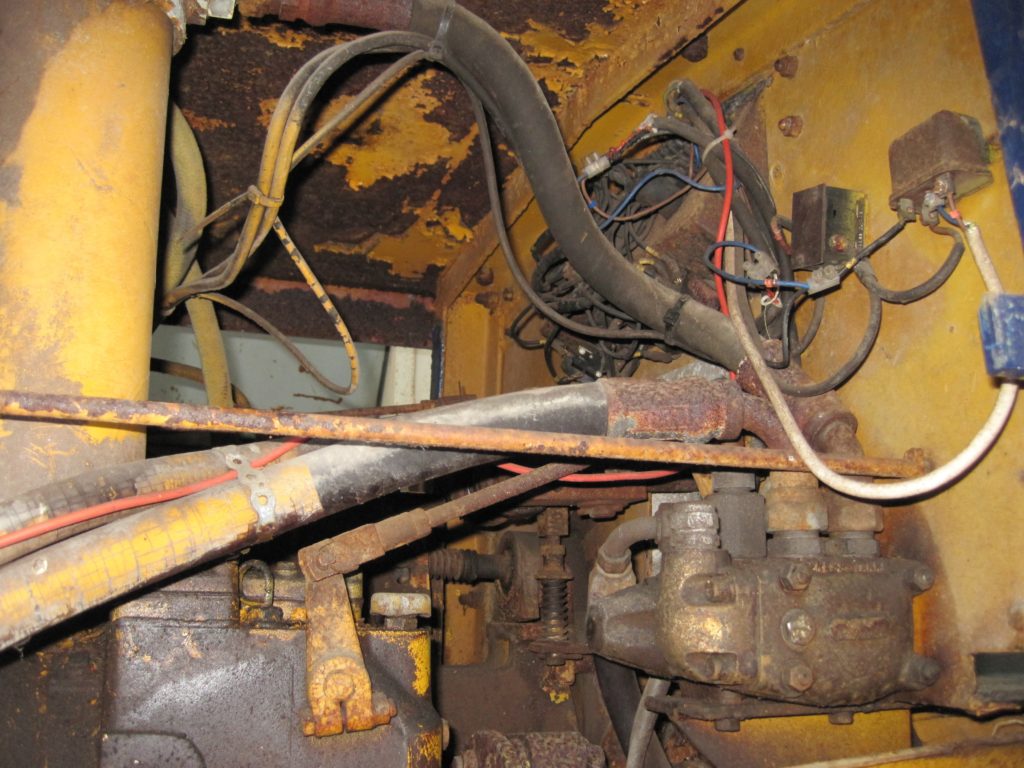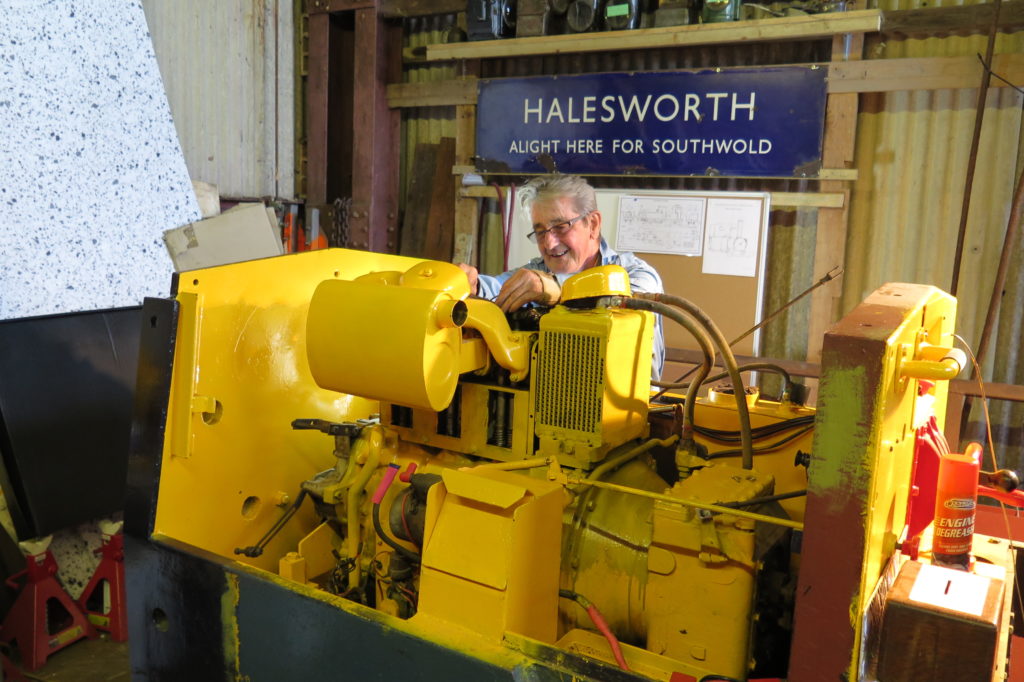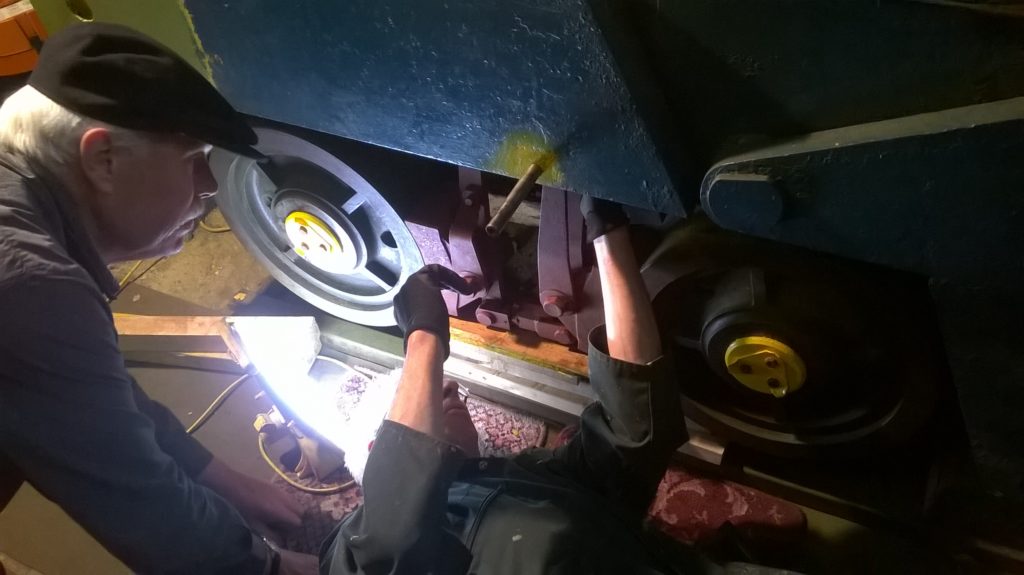
On Saturday November 7th, the team working on Peter Nicholson’s Motor Rail locomotive “Mells” had a major success. John R, who has rebuilt pretty well the entire electrical system, completed the last job – replacing a faulty voltage regulator – which was preventing the alternator from charging the battery. James finished the exhaust system (which has had a new up-pipe and flapper, new flexible pipe, and new lagging) – and, as the loco is sitting on a length of “track” (actually square-section steel, but it does the job and is easily movable), we decided to go for it, and try to move the loco under its own power. A new volunteer member, Mike (who just dropped in for a look around, and was immediately dragooned into helping with the exhaust lagging – which is what we do – so be warned!), was the only other witness when for the first time in (we think) several decades, the locomotive smoothly rolled up and down about 10 feet. At that stage, the torque converter was showing a low fluid level, so we topped it up – and the pressure light went out (a good test of the sensor). The air-cooled engine is strangely quiet, and the very complex drive train is all working efficiently. So – SRT now has its first working three-foot-gauge locomotive!

The rest of the gang, who had been transporting material to our new storage area, and doing a very successful trial lay of the grass protection grid (very kindly supplied by SRT-supporters Grassform of Essex*) at Blyford Lane, returned, and naturally all had a go. The locomotive is surprisingly easy to drive, compared with earlier Motor Rail locos – although it’s not quite so easy to stop, only having a handbrake, which needs quite frantic wheel-turning towards the end of the temporary track: a team of two, with one just doing the braking, is the ideal. We now understand why there are two seats inside the cab – where there’s really only room for one! There’s still work to do, of course – we are missing a couple of caps (one very large, on the diesel tank) – and the Deutz engine can now be completed with various finishing-off bits and adjustments. The oil pressure sensor has a problem: it may be that a gauge would be handy (oddly, there are zero gauges on the loco as
built). We need an “audible warning device” (a horn). There’s a lot of painting to do, in GER (SR) blue. But after almost twelve months of work (always mucky, and sometimes frustrating) we definitely have “a result”. *Grassform Plant Hire Ltd, Ingatestone, Essex www.grassform.co.uk

